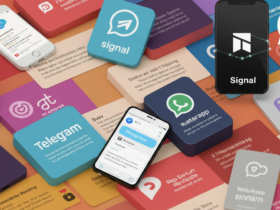Intro of Best time management hacks for remote workers
The remote work lifestyle offers freedom and flexibility, but is not without challenges, especially concerning managing time. Without an office to serve as a boundary marker for one’s day, smart remote workers risk succumbing to discovering ways to defeat the purpose of work and get supremely distracted or even overwhelmed because of an unhealthy blend of personal and professional duties.
Regardless, achieving smart time management as a remote worker is entirely possible. This article aims to provide practical tips designed to help you with organization, productivity, and work-life harmony. These recommended actions will help you effectively harness your time and maximize your workday.
The Basics of Time Management for Remote Workers
Why Time Management Matters When You Work from Home
The complete absence of a conventional office makes the management of time a priority for remote workers. Some of the challenges that arise include:
-
No direct supervision: All your time is spent independently.
-
Blurred boundaries: The line that separates one’s professional life from personal life fades away.
-
Distractions: Household chores, friendly visits, family members, and even pets could distract you.
Meeting set goals can help mitigate remote work struggles and make one vastly productive.
Key Challenges Remote Workers Face
Remote work offers numerous advantages, but additional self-discipline and structure are also required. The common difficulties that people face include:
-
Lack of routine: A lack of a schedule leads to squandering time that could otherwise be spent profitably.
-
Isolation: Working from home can be lonely and harm one’s productivity and motivation.
-
Overworking: Remote employees find it difficult to ‘log off’ and switch off, which often leads to burnout.
Armed with this information, working remote becomes easier to manage with focus, balance, and productivity.
How to Set Effective Goals and Prioritize Tasks
Setting SMART Goals for Maximum Productivity
In order to remain concentrated and on schedule, having clear and actionable goals is indispensable. Objectives can be structured using the SMART (Specific, Measurable, Achievable, Relevant, Time-bound) framework as follows:
Specific: Ensure that there is a precise definition of what needs to be accomplished.
Measurable: Seek out definite ways for tracking progress.
Achievable: Goals should be set realistically given the available resources.
Relevant: Confirm that the goals intended to be achieved are consistent with what’s important.
Time-bound: Timeliness is key in meeting one’s expectations—deadlines drive accountability.
In contrast to vague goals such as “Write additional blog posts,” a better example would be, “Write 2 blog posts by Friday, concentrating on SEO.” You are defining a measurable, time-bound goal that aligns with the aim of the assignment.
Prioritizing Tasks with the Eisenhower Matrix
The Eisenhower Matrix is an effective approach for prioritizing tasks based on urgency and importance.
- Do these tasks immediately (e.g., client deadlines). Important, Urgent.
- Schedule these tasks for later (e.g., long-term projects). Important, Not Urgent.
- Delegate these tasks if possible (e.g., some emails). Urgent, Not Important.
- Eliminate or minimize these tasks (e.g., unnecessary meetings). Neither Urgent nor Important.
Following this method will make it easier for you to focus on what is really important and avoid spending time on low-priority tasks.
The Power of a To-Do List
Organizing one’s life into a to-do list sounds basic, yet forming this habit is one of the most effective practices out there. Your list should be:
-
Realistic: Don’t overwhelm yourself with too many tasks.
-
Actionable: Large tasks should be broken down into smaller, actionable steps.
-
Prioritized: Start with the most important tasks, and leave the easier ones for later in the day.
You shall feel a sense of achievement and get your momentum going when you cross out completed tasks.
Time Blocking: A Game-Changer for Remote Workers
What is Time Blocking and How Does It Work?
Time blocking is a technique that lets you focus on certain tasks for specific periods of time throughout the day. You may set aside certain blocks of time such as 9 AM to 11 AM for writing and 11 AM to 12 PM for checking emails. This will make sure that you give 100% attention to one task at a time which increases productivity.
The benefits of time blocking include:
-
Improved focus: Attention span is higher while performing a single task.
-
Better time management: Helps to assign definitive periods for work which leads to no guess work.
How to Set Up Your Time Blocks
To start time blocking:
-
Plan your day in advance: Check your to-do list and assign time slots for each task.
-
Include breaks: Do not forget to fit in your short breaks.
-
Be flexible: This allow you to make adjustments to blocks if some tasks take longer to complete than anticipated.
Time blocks can be made and visualized using Google Calendar and Trello.
Using Technology to Stay Organized
Top Tools for Time Management
Whether your workplace is located in an office or located at home, there is always a range of tools which can be used to increase your efficiency. In this case, remote workers can benefit from the following:
Time Tracking Tools: These include Toggl, RescueTime, and Clockify. This software helps you monitor the time spent on various tasks, which helps improve performance over time.
Task Management Tools: Such as Asana, Trello, or ClickUp, allow you to describe your specific tasks, set due dates, and view timelines graphically.
Calendar Apps: Allow you to schedule time for appointments and tasks, such as Google Calendar and Outlook.
All the tools mentioned above help a remote worker maintain order in their workflow while working towards their goals.
Why Technology Helps You Stay Accountable
With modern technology, a remote worker can efficiently manage their schedule and stay focused on their work. Automated reminders help ensure all provided tasks are completed by the deadlines set. By linking a calendar, task manager, and time tracker, a remote worker can manage to get all scheduling items completed on time.
Building Productive Routines and Habits
The Importance of Routine for Remote Workers
A routine is helpful to all employees and especially beneficial to remote workers. A remote worker operating under a routine can minimize exhaustion which is caused by the constant pressure of making decisions on what tasks to complete at specific time frames.
Being aware of the tasks planned for each time frame eliminates the need to wonder what needs to be done next and makes it easier to focus on completion.
Creating Morning and Evening Routines
Getting out of bed and following a morning routine shows structure to a person’s day. Here’s how you can summarize an effective morning routine.
-
Wake up early: Treating yourself to relaxation the night before allows a person to wake up without feeling overwhelmed and rushed.
-
Exercise: Simple physical activity like stretching can elevate energy levels.
-
Plan your day: Consider checking the important activities that need to be completed before the day starts.
A evening routine is also essential as it allows a person to rest from daily activities. Take into consideration:
-
Reflecting on your day: Start by looking at the day’s events to see what went well and what needed to be done differently.
-
Relaxing: Dedicate free time with no screen activities.
Habits That Improve Time Management
-
The Pomodoro Technique: The Pomodoro method encourages a person to work for a set duration of time while taking breaks. . It allows a person to work for 25 minutes and enjoy a five minute break afterwards. After four cycles, the person is encouraged to take a longer break to reduce the chances of burnout.
-
The 2-Minute Rule: The two minute rule follows the change that is needed to improve a person’s day. If something does not take long to do, a person should just do it. By applying the two minute rule, small tasks do not build and cause chaos.
-
Eat the Frog: The first thing you do in the morning should be your hardest or most critical work. This sets a productive tone for the rest of the day.
You can also read How to know if your phone is hacked (warning signs)
Avoiding Distractions: Staying Focused in a Remote Work Environment
Common Distractions for Remote Workers
All remote workers must overcome one preeminent challenge—distractions. These include:
-
Household chores: Satisfying the urge to access various social media platforms.
-
Family or roommates: Laundry, dishes, and cleaning are a distraction.
-
Social media: Conversations and interruptions are also a distraction.
How to Minimize or Eliminate Distractions
-
Set clear boundaries: Tell your spouse or anyone sharing the living space with you your working hours.
-
Use website blockers: During working hours, distracting websites can be blocked with apps like StayFocusd and Freedom.
-
Designate a work space: This helps you to put you into “work mode”.
Managing Work-Life Balance as a Remote Worker
Setting Clear Boundaries Between Work and Personal Life
When working remotely, one of the most common troubles employees face is striking a balance between their personal life and work. Below are some tips to balance the two.
Set work times: Draw up a timetable and share it with colleagues, friends, and family to help stick to your schedule.
Develop a Ritual: Stick to your set routine to get into the right mindset before work and personal time.
Avoiding Remote Work Burnout
- Lack of self-care will increase remote work burnout. The following suggestions may help:
- Keep an active lifestyle: Stand up and take a walk or stretch.
- Disconnect after hours: Set aside time later in the day to fully switch off and unwind.
- Take time off: Ensure that screening calls/ checking emails during holidays is not habitual.
My Opinion
Effective time management when studying to avoid burnout and maintain productivity and a healthy balance as remote work is crucial. Setting milestones to achieve each day will help stay organized. Scheduling specific tasks into bent time blocks while ensuring fewer distractions will boost remote productivity.
Effective time management techniques should be practiced regularly. Consider implementing these hacks today. The more you use the strategies, the easier your life will become when balancing time and remote work.















Leave a Reply
View Comments